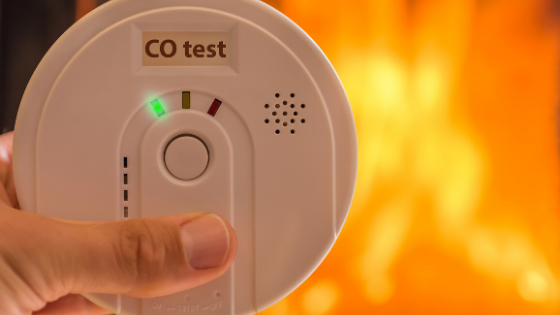Carbon Monoxide Poisoning

Did you know that December and January are the peak months for carbon monoxide poisonings?
Carbon monoxide (CO) is an odorless, colorless gas that interferes with the delivery of oxygen in the blood to the rest of the body. It is produced by the incomplete combustion of fuels and can be emitted by such sources as unvented kerosene and gas space heaters, furnaces, woodstoves, gas stoves, fireplaces, water heaters, and automobile exhaust. Problems can occur from improper installation, maintenance, or inadequate ventilation.
Carbon Monoxide Poisoning Prevention:
- Consider installing a carbon monoxide alarm in your home
- Replace the battery for your home’s carbon monoxide detector each spring and fall
- Do not heat your home with a gas range or oven
- Never run equipment or vehicles inside an enclosed space such as an attached garage
- Make sure chimneys, fireplaces, and other areas are annually inspected and cleaned by a certified technician
Symptoms Include:
- Fatigue
- Headache
- Weakness
- Nausea
- Dizziness
Carbon Monoxide Poisoning Treatment:
- Ventilate the area by opening doors and windows
- Turn off the carbon monoxide source if you can do so safely
- Contact emergency services. Be sure to state that you suspect carbon monoxide poisoning
If you suspect CO may be present, or experience any of the symptoms described, get out of the area immediately. If possible, open windows and doors to let in the fresh air. Turn off any devices that you think might be causing the problem and do not go back until the area has been determined to be safe.
Remember, you can’t smell or see Carbon Monoxide, but it can kill you just the same. Learn more at CDC.gov.





